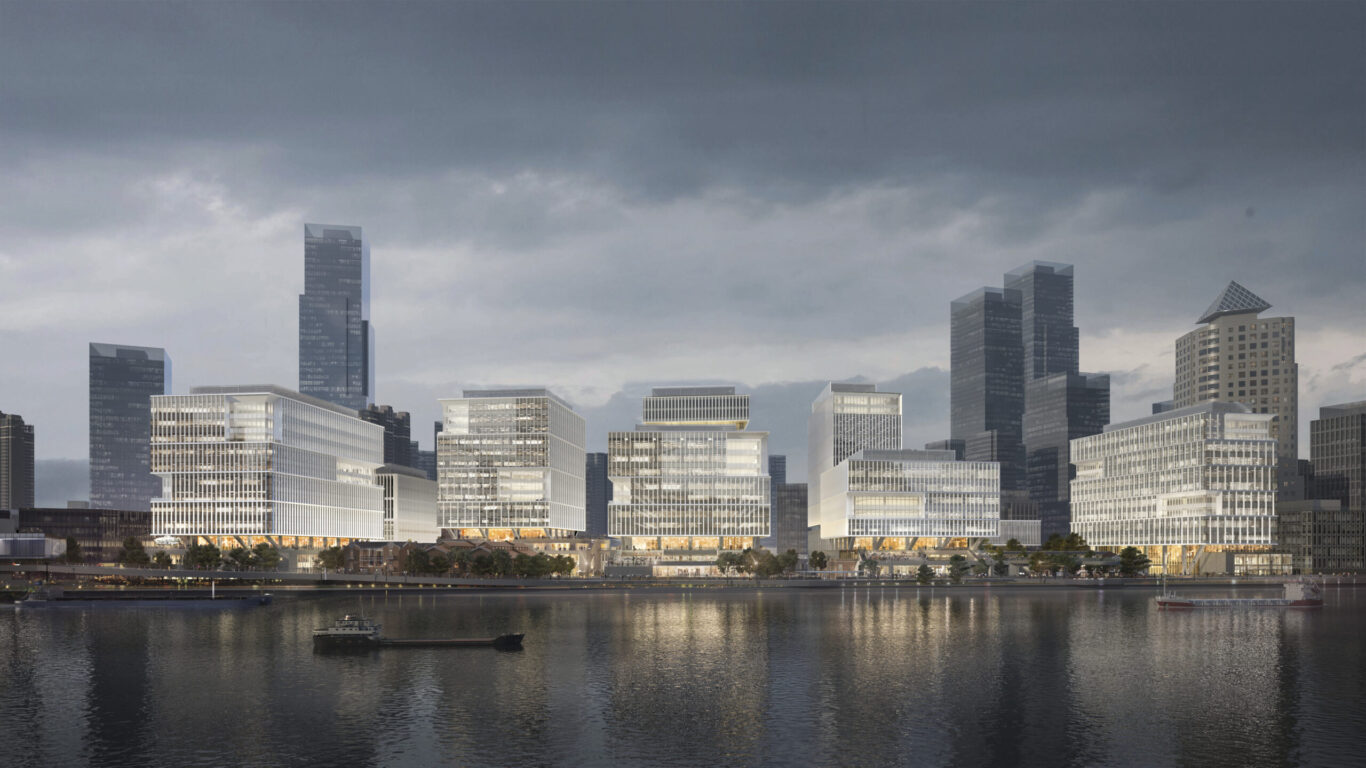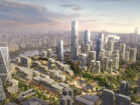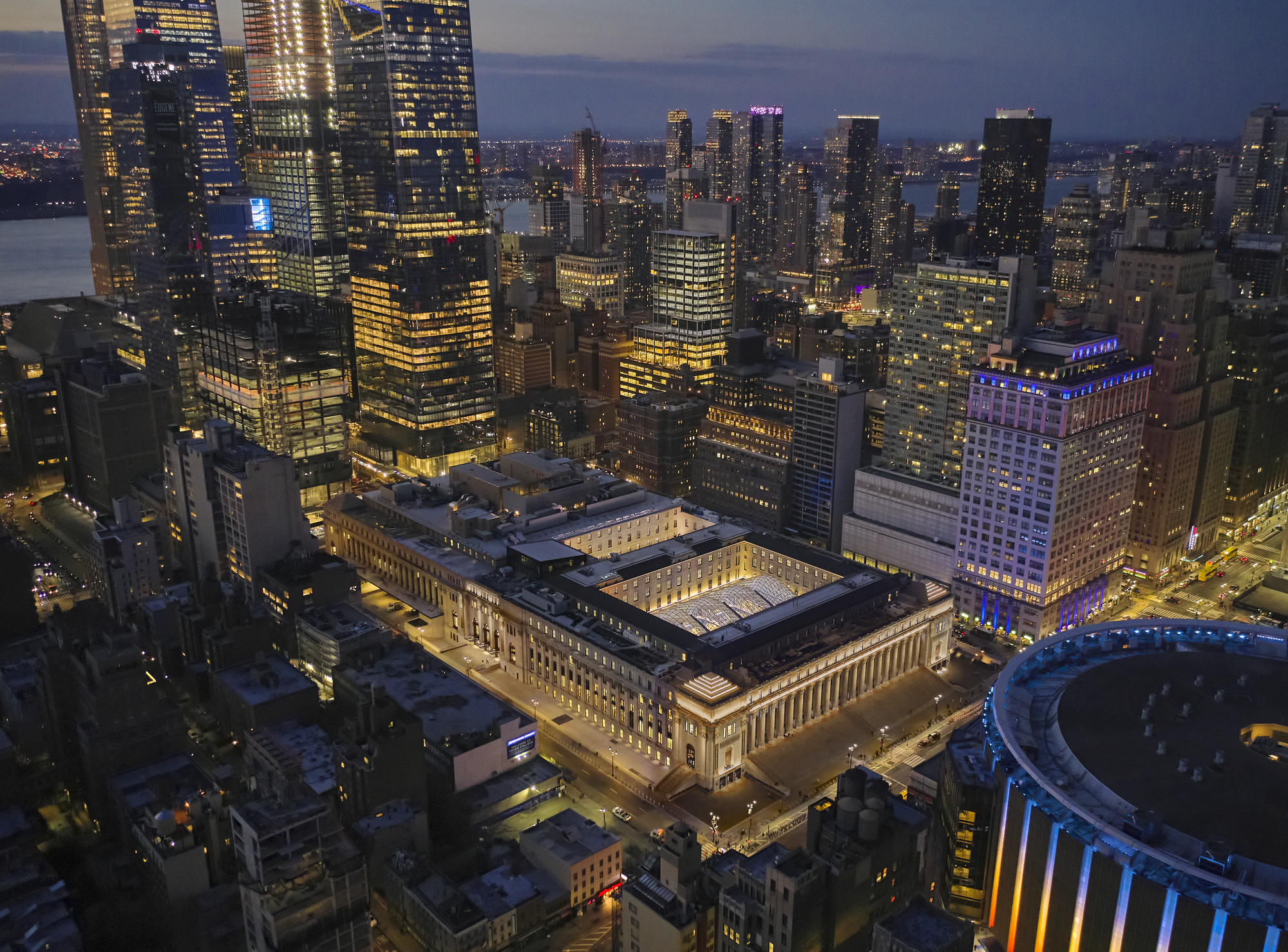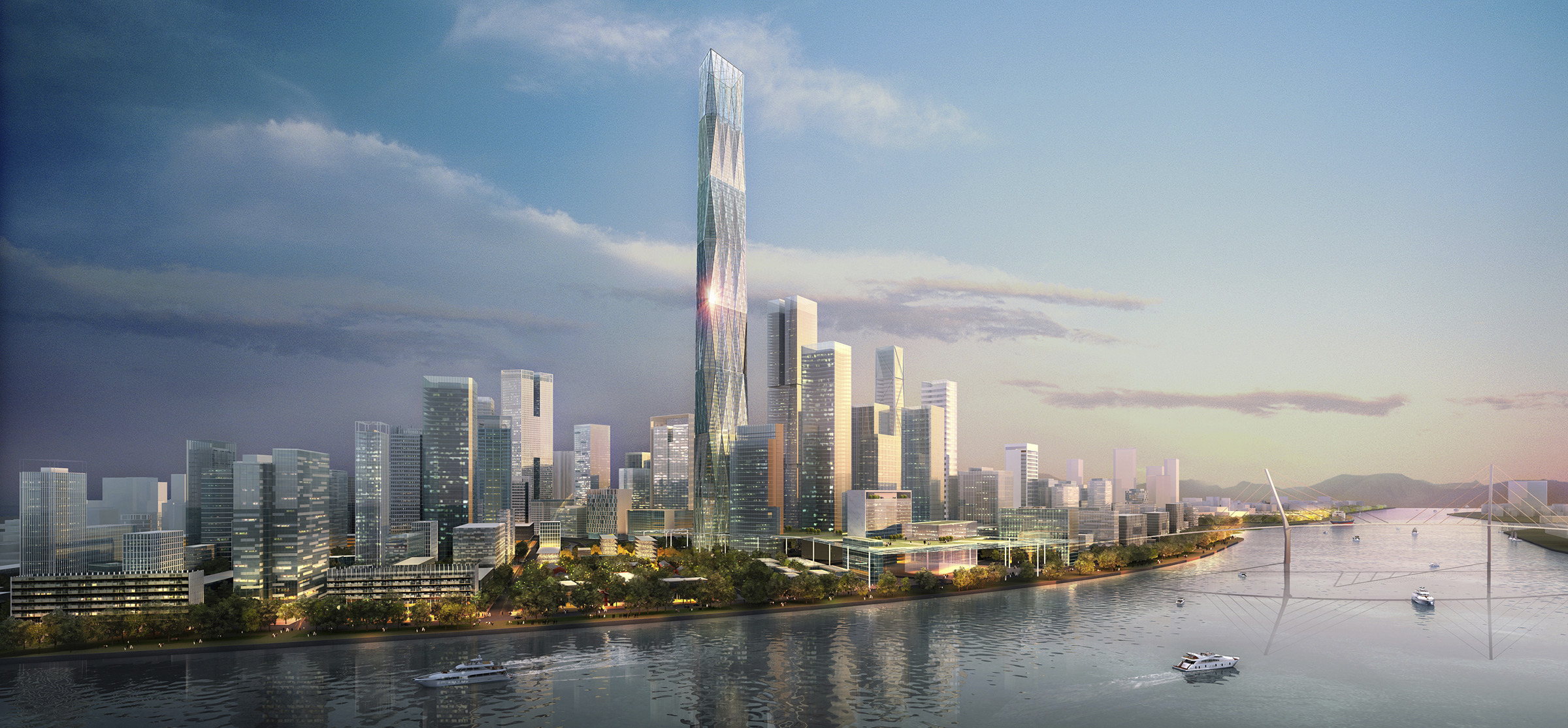Transforming a singular riverfront site
SOM’s design for the South Bund Financial Center envisions a dynamic renewal of one of the last remaining areas along the South Bund that has not yet been redeveloped. At this key location, just north of the landmark Nanpu Bridge, and with connections to the river promenade, the South Bund Financial Center is poised to become a thriving part of Shanghai’s contemporary riverfront.

In contrast to other redevelopment projects in Shanghai, our masterplan strikes a careful and intentional balance between historic preservation and new construction. The plan aims to retain and preserve historic buildings, while floating new office buildings above them—creating a dynamic mix of uses that will realize the area’s potential to become a commercial and cultural destination. In this way, the project offers a compelling model for how to preserve and redevelop historic industrial sites throughout China.













